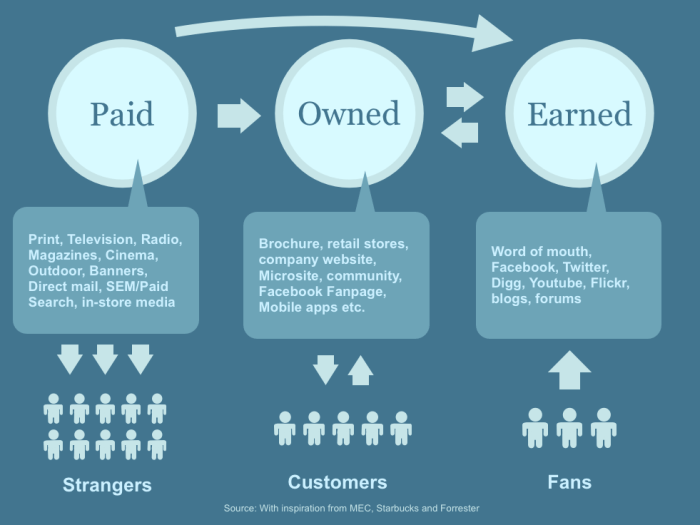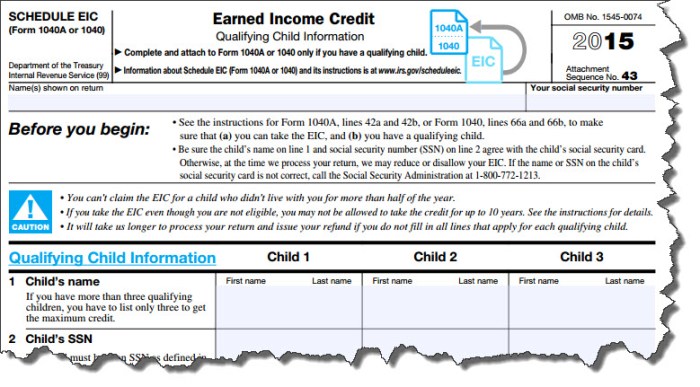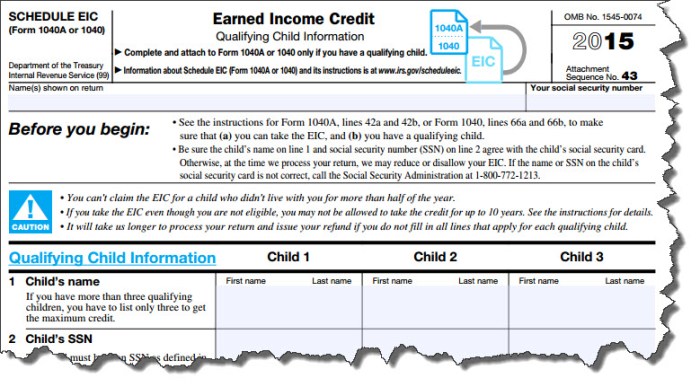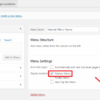Earned media in professional services 3 strategies for success – Earned media in professional services: 3 strategies for success. This in-depth guide explores the crucial role of earned media in building a strong brand presence for professional service firms. We’ll delve into defining earned media, identifying your target audiences, crafting compelling content, amplifying your efforts, and measuring success. By understanding these key strategies, you’ll be well-equipped to leverage earned media for enhanced visibility, reputation, and client acquisition.
From crafting thought leadership articles to effectively leveraging client testimonials, this guide provides actionable insights. Discover how to differentiate your firm in the competitive professional services landscape and generate positive, organic buzz.
Defining Earned Media in Professional Services

Earned media, in the professional services realm, refers to the positive publicity and recognition a firm gains through third-party sources. This differs significantly from paid media, where companies directly purchase advertising, and owned media, which encompasses the firm’s own channels like their website or blog. The key distinction lies in the independent nature of earned media; it’s not a direct marketing effort but rather a result of positive experiences and testimonials that spread organically.Earned media in professional services is a powerful tool for building credibility and trust.
It leverages the influence of satisfied clients, industry experts, and the media to generate positive perception, fostering a reputation for excellence and reliability.
Key Characteristics of Earned Media
Earned media distinguishes itself from other forms of media through its inherent independence and credibility. Unlike paid media, which involves direct investment in marketing campaigns, earned media arises from genuine client satisfaction and positive interactions with the firm. This inherent objectivity makes earned media a powerful asset for building trust and establishing a positive brand image. The key differentiators include organic growth, third-party validation, and the absence of direct control over messaging.
Forms of Earned Media
Earned media in professional services manifests in various forms, including:
- Online reviews and testimonials on platforms like Google My Business, Yelp, and industry-specific review sites. These reviews are critical because they provide real-world perspectives from clients, building trust and credibility.
- Press mentions and media coverage in industry publications, news articles, or blogs. A positive feature story or interview can significantly enhance a firm’s reputation and visibility within the professional community.
- Social media engagement, including positive comments, shares, and mentions on platforms like LinkedIn, Twitter, and Facebook. Active participation in relevant conversations and thoughtful responses to client inquiries can generate valuable earned media.
- Case studies and success stories showcasing the firm’s expertise and problem-solving capabilities. These can be published on the firm’s website, shared in industry publications, or presented at conferences.
Earned Media vs. Paid and Owned Media
The effectiveness of earned media is amplified when strategically integrated with paid and owned media strategies. Each type offers unique advantages and disadvantages:
| Media Type | Advantages | Disadvantages |
|---|---|---|
| Earned Media | Builds trust and credibility through independent validation. Often perceived as more authentic and reliable by potential clients. Cost-effective, as it doesn’t require direct investment in advertising. | Difficult to control the message and timing of its appearance. Requires proactive engagement and client satisfaction. Difficult to quantify the ROI. |
| Paid Media | Directly targets specific demographics and markets. Offers a higher level of control over the message and placement. Provides immediate visibility. | Can be expensive, especially for sustained campaigns. Can appear less authentic to potential clients. Requires careful budgeting and planning to yield positive ROI. |
| Owned Media | Creates a direct communication channel with clients. Allows for consistent brand messaging and control over content. Builds a dedicated client base. | Can be time-consuming to develop and maintain high-quality content. Limited reach compared to other forms of media. Requires consistent effort to engage clients and maintain audience interest. |
Identifying Target Audiences for Earned Media

Targeting the right audience is crucial for a successful earned media strategy in professional services. Instead of casting a wide net, focusing on specific segments allows for more impactful messaging and maximized results. Understanding the unique needs, interests, and communication preferences of your ideal clients is key to crafting compelling stories that resonate and drive meaningful engagement.
Key Target Audience Segments
Different segments within your target audience will respond differently to your earned media efforts. By understanding these segments, you can tailor your messaging and channels for optimal impact. Recognizing shared interests and needs within these segments allows for a more effective and efficient approach to reaching your ideal clients. This segmentation will allow you to create highly targeted campaigns.
Identifying Characteristics and Needs
Professional service firms should identify their key target audiences based on factors such as industry, job title, company size, and specific pain points. These characteristics will inform the content and channels used to reach them. Understanding their specific needs and challenges helps tailor the messaging and position the firm as a solution provider.
Preferred Communication Channels and Content Formats
Different target audiences prefer different communication channels and content formats. Understanding these preferences is crucial for optimizing your earned media strategy. Some audiences might engage more with industry publications, while others might prefer webinars or online communities.
Target Audience Segmentation Table
| Target Audience Segment | Characteristics | Needs | Preferred Communication Channels | Content Formats |
|---|---|---|---|---|
| C-Suite Executives (CEO, CFO, CIO) | High-level decision-makers in large organizations. | Information on strategic solutions and return on investment. | Executive-level publications, industry conferences, exclusive webinars. | Data-driven reports, case studies, thought leadership articles. |
| Mid-Level Managers | Managers responsible for specific departments or projects. | Practical solutions and actionable insights to improve their daily work. | Industry blogs, online articles, social media groups, podcasts. | How-to guides, case studies, checklists, infographics. |
| Individual Contributors | Professionals looking to advance their careers. | Knowledge and inspiration to enhance their skills and knowledge. | Social media platforms, online communities, professional development resources. | Tips and tricks, personal stories, industry news. |
| Potential Clients | Organizations exploring solutions for their specific needs. | Information on the firm’s capabilities, credibility, and expertise. | Industry websites, online reviews, company website, case studies. | Thought leadership articles, white papers, presentations, testimonials. |
Crafting Compelling Content Strategies for Earned Media
Attracting media attention and building brand trust in professional services requires a strategic approach to content creation. Simply publishing content isn’t enough; it needs to resonate with your target audience, be engaging, and provide demonstrable value. A well-defined content strategy is crucial for generating earned media opportunities and amplifying your firm’s message.A successful content strategy goes beyond just producing materials.
Boosting your professional services firm’s visibility through earned media takes strategy. Three key approaches are crucial for success. Understanding how AI impacts SEO is also essential, especially for companies like DAC Group Spa. For example, ai overviews seo tips dacgroup spa offers a wealth of information on leveraging these technologies. Ultimately, a strong earned media presence builds trust and credibility, positioning your firm for growth.
It necessitates a deep understanding of your target audience’s needs and interests. This understanding is essential to crafting content that speaks directly to them, encouraging engagement and ultimately, media coverage. Furthermore, the content must be meticulously crafted to appeal to the specific journalistic values of the media outlets you wish to target.
Content Formats for Earned Media
Different content formats can effectively reach different audiences and objectives. Understanding which format best suits your message and target audience is crucial for maximizing impact.
- Thought Leadership Articles: These articles showcase your firm’s expertise and establish you as a leader in your industry. They often address current trends, challenges, or opportunities within your field. They position your firm as a source of valuable insights, attracting media attention and demonstrating your firm’s deep understanding of the industry.
- Case Studies: Case studies provide detailed accounts of successful projects or client engagements. They demonstrate your firm’s capabilities, highlighting the tangible results you deliver. They are often more persuasive than theoretical explanations, offering real-world examples of success.
- Client Testimonials: Positive testimonials from satisfied clients add credibility and social proof. These endorsements from previous clients build trust and encourage potential clients to consider your firm’s services.
- Industry Reports and White Papers: These in-depth documents showcase your expertise and provide valuable information to your target audience. They often address complex issues or emerging trends, positioning your firm as a thought leader. By offering insightful analysis and actionable recommendations, you attract media attention and position your firm as a reliable source of industry knowledge.
Storytelling for Brand Trust
Storytelling is a powerful tool for connecting with audiences on an emotional level. It allows you to humanize your firm, build trust, and establish a stronger connection with your target audience. Weaving narratives around your clients’ successes, challenges overcome, and the impact of your services creates compelling content that resonates with readers and builds lasting brand loyalty. This method makes your firm memorable and relatable.
- Highlighting Client Successes: Instead of simply listing facts and figures, focus on the human stories behind your client successes. Showcase how your services positively impacted their lives or businesses. This adds depth and emotional resonance to your content, attracting the interest of both clients and media outlets.
- Emphasizing Challenges Overcoming: Highlighting the difficulties you faced and overcame during a project can make your firm seem more human and relatable. This authenticity helps build trust and confidence in your firm’s abilities to overcome challenges for other clients.
- Showcasing Firm Culture: Sharing insights into your firm’s culture, values, and work environment can attract talent and build a positive brand image. These narratives add another layer of human connection, making your firm more attractive to potential clients and partners.
Using Data and Metrics to Track Effectiveness
Monitoring the performance of your content strategy is essential to optimize your efforts and improve results. Using data and metrics allows you to understand what resonates with your target audience and make adjustments as needed. Tracking key metrics provides valuable insights into your content’s effectiveness, enabling you to tailor future strategies for maximum impact.
- Website Traffic and Engagement Metrics: Analyzing website traffic and engagement metrics (e.g., time spent on pages, click-through rates) provides insights into the content that resonates most with your target audience. By examining these metrics, you can determine which types of content attract the most interest.
- Social Media Engagement: Tracking social media engagement metrics (e.g., likes, shares, comments) reveals how well your content is being received by your target audience. This information helps you gauge the effectiveness of your content in driving interaction and discussion.
- Media Mentions and Coverage: Monitoring media mentions and coverage provides insights into the impact of your content on public perception. Tracking media mentions helps you understand the reach and effectiveness of your content in achieving your objectives.
Amplifying Earned Media Efforts: Earned Media In Professional Services 3 Strategies For Success
Getting your earned media coverage noticed and maximizing its impact requires a strategic amplification plan. Simply publishing a press release or sharing a blog post isn’t enough in today’s competitive landscape. Effective amplification leverages various channels and strategies to ensure your message reaches the intended audience and generates meaningful results. This involves proactively sharing your earned media content, engaging with relevant audiences, and building relationships with key stakeholders.Amplification is crucial for turning earned media into tangible value.
It’s about transforming passive exposure into active engagement and demonstrating the impact of your professional services expertise. A well-executed amplification strategy can significantly increase brand awareness, drive website traffic, generate leads, and ultimately contribute to business growth.
Methods for Amplifying Earned Media Across Various Channels
Effective amplification strategies go beyond simply sharing content. They require understanding the nuances of each channel and tailoring your approach accordingly. Different channels have varying strengths and weaknesses, so a diversified approach maximizes reach and impact.
So, you’re looking to boost your professional services firm’s visibility through earned media? Great! Knowing how to leverage online conversations is key. Recent changes to Google’s advertising policies, particularly concerning gambling games ( google updates its gambling games advertising policy ), highlight the need for strategic adaptation. This means focusing on high-quality content creation, building relationships with relevant journalists, and actively participating in industry discussions to drive organic reach.
These strategies remain crucial for sustained success in earned media.
- Social Media Promotion: Leveraging social media platforms like LinkedIn, Twitter, and even Facebook (if appropriate) can significantly amplify your earned media coverage. Sharing articles, quotes, and relevant visuals can engage your target audience and drive traffic to the original source. Creating engaging social media posts that summarize key takeaways from the article or highlight specific quotes from the piece can increase its visibility and encourage discussion.
Hashtags relevant to your industry and the specific topic can also expand the reach of your posts.
- Email Marketing Integration: Integrating earned media content into your email marketing campaigns is a valuable tactic. Feature excerpts, key quotes, or links to the original article in your newsletters or targeted email campaigns to further engage your subscribers and drive traffic. This approach can extend the lifespan of your earned media and reinforce your message to a wider audience.
- Website Integration: Incorporating links to earned media articles on your website and highlighting them in relevant blog posts, landing pages, or case studies allows for easy access and reinforces your brand’s credibility. This not only drives traffic but also strengthens your online presence and provides valuable content for visitors.
Strategies for Promoting Earned Media Content on Social Media Platforms
Social media platforms are vital for amplifying earned media. Understanding the nuances of each platform and crafting engaging content tailored to its specific audience is key to success.
- Tailoring Content for Each Platform: Different social media platforms have distinct characteristics and user behaviors. Content should be adapted to suit the platform’s style. For instance, LinkedIn might benefit from in-depth articles or insightful commentary, while Twitter thrives on concise, engaging summaries and relevant quotes. Images and videos can enhance engagement across platforms.
- Engaging with Comments and Interactions: Responding to comments and questions related to your earned media content demonstrates engagement and fosters a sense of community. This interaction not only strengthens your brand image but also encourages further discussion and amplifies the reach of your message.
- Utilizing Relevant Hashtags and s: Employing relevant hashtags and s increases discoverability. This strategy ensures that your content reaches a broader audience interested in your industry or topic.
Leveraging Relationships with Journalists and Influencers
Nurturing relationships with journalists and influencers is essential for amplifying earned media efforts. These individuals can help you reach a wider audience and gain credibility within your industry.
- Building Rapport: Maintaining open communication with journalists and influencers builds trust and rapport. Regular communication, thoughtful engagement, and providing valuable insights can position you as a go-to source within your industry.
- Providing Exclusive Content: Offering exclusive insights or perspectives to journalists and influencers can position you as a valuable resource. This fosters relationships and increases the likelihood of future coverage.
- Engaging in Thought Leadership: Engaging in thought leadership activities, such as publishing insightful articles or participating in industry events, positions you as an expert in your field. This, in turn, enhances your credibility and attracts the attention of journalists and influencers.
The Importance of Public Relations in Amplifying Earned Media Efforts
Public relations plays a pivotal role in amplification. It facilitates strategic communication and enhances the impact of earned media.
- Strategic Communication: Public relations professionals can craft compelling narratives that align with earned media coverage, further amplifying the message and ensuring maximum impact. This involves crafting concise, compelling narratives that resonate with the target audience and showcase the value of the professional services offered.
- Building Brand Reputation: Public relations fosters a positive brand image, thereby increasing trust and credibility, which ultimately contributes to the amplification of earned media efforts. A strong brand reputation attracts the attention of journalists and influencers, increasing the likelihood of favorable coverage and further enhancing your brand visibility.
- Crisis Management: A robust public relations strategy can effectively manage potential crises, minimizing reputational damage and safeguarding your brand’s integrity. This includes having a crisis communication plan in place, which is crucial for managing any potential reputational damage associated with earned media coverage.
Amplification Strategy Comparison
| Strategy | Channels | Potential Impact |
|---|---|---|
| Social Media Promotion | LinkedIn, Twitter, Facebook | Increased brand awareness, website traffic, lead generation |
| Email Marketing Integration | Email newsletters, targeted campaigns | Extended earned media lifespan, enhanced engagement with subscribers |
| Website Integration | Website, blog posts, landing pages | Enhanced brand credibility, increased website traffic |
| Relationship Building | Journalists, influencers | Wider audience reach, increased credibility |
| Public Relations Support | Media outreach, crisis management | Strategic communication, enhanced brand reputation |
Measuring and Evaluating Earned Media Success
Tracking the impact of earned media campaigns is crucial for demonstrating ROI and refining future strategies. It’s not just about counting mentions; it’s about understanding how those mentions resonate with your target audience and ultimately contribute to your business goals. Effective measurement goes beyond basic impressions and delves into the tangible effects of your earned media efforts.Understanding the performance of your earned media efforts requires a systematic approach to gathering and analyzing data.
This involves identifying key metrics, consistently tracking progress, and adapting strategies based on the insights gleaned from the data. By establishing clear benchmarks and monitoring progress, you can refine your approach to maximize the impact of your earned media campaigns and achieve desired outcomes.
Key Metrics for Earned Media Success, Earned media in professional services 3 strategies for success
Understanding the impact of earned media requires a multifaceted approach, moving beyond simple impressions to consider engagement and influence. Defining and tracking the right metrics is crucial to demonstrating the effectiveness of your strategies. Metrics should align with specific business objectives, such as lead generation, brand awareness, or thought leadership.
- Reach: This measures the potential audience exposed to your earned media content. It encompasses the total number of unique individuals or organizations who encountered your message through various channels.
- Engagement: This goes beyond reach, focusing on the level of interaction with your content. Metrics like shares, comments, retweets, likes, and click-through rates provide insight into audience response and interest.
- Influence: This gauges the impact of your earned media on perceptions and opinions. Consider factors such as the prominence of the publications carrying your content, the sentiment expressed in the coverage, and the overall tone of the discussion.
- Website Traffic: This measures the direct impact of earned media on website traffic. By tracking the number of visits and time spent on specific pages, you can ascertain whether earned media content is driving desired actions.
- Lead Generation: This is a critical metric for evaluating the effectiveness of earned media campaigns aimed at driving business outcomes. Track the number of leads generated, the quality of those leads, and the conversion rates stemming from earned media activities.
Tracking and Analyzing Earned Media Performance
Regular monitoring and analysis of earned media data are vital for optimization. This process involves consistently collecting data, identifying patterns, and making informed adjustments to your strategies.
Thinking about boosting your professional services firm’s visibility? Earned media is key, and three solid strategies can make a real difference. For instance, focusing on creating valuable content, like thought leadership pieces or insightful case studies, is a great start. A triple bottom line digital marketing agency like a triple bottom line digital marketing agency understands this concept deeply.
Ultimately, these tactics build credibility and attract new clients organically, vital for any successful earned media campaign.
- Consistent Monitoring: Establish a system for regularly tracking earned media mentions across various platforms. Use media monitoring tools to automatically capture news articles, social media posts, and other relevant content. Regular data review is key to understanding trends and making adjustments in real-time.
- Sentiment Analysis: Utilize tools and techniques to determine the overall sentiment surrounding your brand or specific campaigns. This can reveal positive, negative, or neutral opinions about your company and inform strategic adjustments.
- Competitive Analysis: Compare your earned media performance with that of competitors. This provides insights into industry trends, effective strategies, and areas where you can improve your approach.
Tools and Techniques for Measuring Earned Media Impact
Various tools and techniques facilitate accurate measurement of earned media effectiveness. Leveraging these resources can provide a comprehensive understanding of your campaigns’ impact.
- Media Monitoring Tools: These platforms track media mentions across various online and offline channels, providing detailed insights into coverage frequency, sentiment, and reach. Examples include Meltwater, Brandwatch, and Cision.
- Social Media Analytics Tools: These tools provide comprehensive data on social media engagement, including likes, shares, comments, and follower growth. Examples include Hootsuite, SproutSocial, and Buffer.
- Website Analytics: Tools like Google Analytics track website traffic and user behavior, enabling you to measure the impact of earned media on website visits and conversions.
Interpreting Data and Adjusting Strategies
Data interpretation is crucial for optimizing earned media strategies. Understanding trends and patterns within the data enables informed decisions and effective adjustments to your approach.
| Metric | Definition | How to Track |
|---|---|---|
| Reach | Number of unique individuals exposed to the earned media content. | Use media monitoring tools to identify unique sources and platforms where your content is mentioned. |
| Engagement | Level of interaction with the earned media content. | Track likes, shares, comments, retweets, and click-through rates on social media and news articles. |
| Influence | Impact of earned media on perceptions and opinions. | Analyze the sentiment and tone of media coverage, assess the prominence of the publication, and identify key influencers. |
| Website Traffic | Number of visits to your website driven by earned media. | Utilize website analytics tools to track the source of website visits and identify s associated with earned media campaigns. |
Case Studies of Successful Earned Media Campaigns
Earned media campaigns, when executed effectively, can significantly boost brand visibility and reputation in the professional services sector. They demonstrate expertise, build trust, and ultimately drive client acquisition. Analyzing successful campaigns provides invaluable insights into strategies, content, and amplification techniques that resonate with target audiences.
Examples of Successful Campaigns in Professional Services
Several professional services firms have successfully leveraged earned media to enhance their brand image and attract new clients. These campaigns showcase a range of approaches, demonstrating the versatility and effectiveness of earned media strategies.
Strategies Used in Successful Campaigns
Successful earned media campaigns often employ a multi-faceted approach. They leverage various strategies to maximize impact and reach the desired audience. This includes strategic partnerships, thought leadership initiatives, and proactive engagement with industry publications.
- Strategic Partnerships: Collaborations with complementary businesses or industry influencers can expand reach and credibility. For example, a law firm might partner with a prominent legal technology company to co-host webinars or participate in industry events, thereby exposing their expertise to a wider audience.
- Thought Leadership Initiatives: Publishing insightful articles, creating informative white papers, or delivering presentations at industry conferences establishes the firm as a thought leader in its field. A consulting firm might publish articles on emerging trends in the industry, demonstrating their expertise and knowledge.
- Proactive Engagement with Industry Publications: Securing media coverage through press releases, interviews, and contributions to industry publications builds brand awareness and reinforces the firm’s expertise. A financial advisory firm might contribute insightful articles to financial journals, positioning themselves as a leading voice in the industry.
Content Creation and Amplification Techniques
Compelling content is crucial for capturing attention and driving engagement. Amplification techniques ensure the content reaches a broader audience and maximizes impact. High-quality content is essential for success.
- High-Quality Content: Content must be insightful, well-researched, and presented in a clear, concise, and engaging manner. This includes providing valuable information to the audience that is relevant to their needs and interests. A detailed case study about a specific project or a well-written article about industry trends are examples of effective content formats.
- Targeted Distribution: Understanding the target audience and utilizing the appropriate channels to reach them is crucial. This involves considering the publication preferences, industry trends, and engagement patterns of the target audience. For example, distributing content via industry newsletters or relevant social media platforms.
- Amplification Tactics: Promoting earned media coverage across various platforms, such as social media, email newsletters, and the firm’s website, significantly expands reach. Sharing articles and blog posts on LinkedIn, Twitter, or other relevant platforms can increase visibility and engagement.
Results Achieved and Lessons Learned
Successful earned media campaigns demonstrate quantifiable results, including increased brand awareness, improved brand reputation, and a surge in client inquiries. Understanding the impact of the campaign allows for future refinements and enhancements.
- Measurable Results: Tracking key metrics like website traffic, social media engagement, and lead generation allows for evaluation of campaign effectiveness. Analysis of these metrics reveals the impact of earned media on various aspects of the business.
- Brand Reputation Enhancement: Positive media coverage strengthens the firm’s reputation and credibility. This is reflected in improved brand perception, customer trust, and referrals. Demonstrating expertise in a particular field or area.
- Increased Client Acquisition: Earned media campaigns can drive qualified leads and generate new business opportunities. Demonstrating a firm’s knowledge and expertise in a particular field or area.
Key Takeaways from Successful Campaigns
| Category | Key Takeaway |
|---|---|
| Content Quality | High-quality, insightful content is crucial for driving engagement and establishing thought leadership. |
| Target Audience Focus | Understanding the target audience and tailoring content to their needs is essential for achieving desired results. |
| Amplification Strategies | Effective amplification strategies, such as social media promotion and email marketing, are vital for maximizing the reach of earned media. |
| Measurable Results | Tracking and analyzing key metrics allows for evaluating campaign effectiveness and refining future strategies. |
Addressing Challenges and Opportunities in Earned Media
Navigating the complexities of earned media in professional services requires a strategic approach that goes beyond simply creating content. It demands a deep understanding of the industry’s unique challenges and a proactive identification of opportunities for engagement and growth. Effective earned media strategies are essential for building brand credibility, thought leadership, and ultimately, driving business results.Professional services firms often face obstacles in their earned media efforts.
These range from resource constraints and a lack of dedicated personnel to the difficulty in crafting compelling narratives that resonate with target audiences. Overcoming these hurdles requires a nuanced understanding of the specific landscape and a willingness to embrace innovative solutions. This section will delve into the common challenges, explore opportunities for engaging content creation, and discuss strategies for successful implementation.
Common Challenges in Earned Media for Professional Services
The professional services sector, often characterized by specialized knowledge and complex solutions, presents unique challenges in building earned media strategies. A lack of readily identifiable stories, the difficulty in translating technical jargon into engaging narratives, and a shortage of dedicated resources can all hinder success. Furthermore, establishing credibility and thought leadership in a saturated market requires a consistent and strategic approach.
- Resource Constraints: Many professional services firms lack dedicated marketing or communications teams, which can hinder the consistent production of high-quality content. This can lead to inconsistent messaging and a lack of sustained engagement with target audiences. Addressing this requires either allocating resources for dedicated teams or training existing staff on content creation and media relations.
- Compelling Content Creation: Translating complex professional services expertise into engaging narratives is challenging. Effectively communicating the value proposition and showcasing expertise requires skillful storytelling and insightful content formats.
- Establishing Thought Leadership: Building a reputation as a thought leader in a competitive professional services field requires sustained effort and a focus on consistent contribution to relevant conversations. This necessitates proactive participation in industry forums, conferences, and publications.
- Measuring Impact: Accurately measuring the impact of earned media efforts can be difficult in professional services. The long-term nature of client relationships and the intangible nature of value creation can make it difficult to connect earned media activity to tangible business results.
Opportunities for Engaging Earned Media Content
Despite these challenges, significant opportunities exist for creating unique and engaging content in the professional services sector. Focusing on areas of expertise, developing interactive content formats, and fostering relationships with industry influencers can significantly enhance earned media efforts.
- Case Studies and Success Stories: Showcase real-world client success stories to demonstrate the value of your services. These stories provide tangible evidence of your expertise and build trust with potential clients.
- Interactive Content Formats: Use interactive content formats such as webinars, online quizzes, or downloadable resources to engage target audiences. This type of content encourages interaction and demonstrates your expertise.
- Industry-Specific Publications: Collaborating with relevant industry publications to create articles or contribute to their content can elevate your firm’s profile and showcase your expertise.
- Building Thought Leadership: Creating and sharing thought leadership content, such as articles, white papers, or blog posts, positions your firm as an expert in its field and fosters credibility.
Strategies for Overcoming Obstacles
Addressing the challenges in earned media requires a strategic approach. The strategies below Artikel effective ways to navigate obstacles and leverage opportunities.
- Content Calendar and Planning: Develop a content calendar to ensure consistent content creation and distribution. A planned approach helps avoid inconsistent messaging and ensures sustained engagement with target audiences.
- Team Training: Invest in training your team on content creation, social media engagement, and media relations. This fosters a team capable of consistent earned media activity.
- Storytelling and Narrative Development: Frame complex information within compelling narratives that resonate with your target audience. This enhances the engagement and memorability of your content.
- Metrics-Driven Approach: Establish clear metrics to track the impact of your earned media efforts. This allows for data-driven adjustments to your strategy for optimal results.
Leveraging Emerging Trends in Earned Media
The landscape of earned media is constantly evolving. Staying ahead of emerging trends and adopting innovative approaches can significantly enhance your efforts.
- Video Marketing: Leverage the power of video content to effectively communicate complex concepts and showcase expertise.
- Social Media Engagement: Actively engage on relevant social media platforms to participate in conversations and build relationships with industry leaders.
- Influencer Marketing: Collaborate with industry influencers to reach a wider audience and build credibility.
- Data-Driven Insights: Utilize data analysis tools to understand audience preferences and adjust content strategies accordingly.
Summary
In conclusion, earned media offers a powerful avenue for professional service firms to elevate their visibility and establish a strong brand identity. By strategically defining target audiences, crafting compelling content, amplifying efforts, and measuring results, firms can build a reputation for expertise and trustworthiness. Implementing these strategies will position your firm for sustained success in the long term.






